Sequel of previous post : Dynamical solutions
In this series of posts about the history of relativistic cosmology, I provide an epistemological analysis of the developments of the field from 1917 to 2006, based on the seminal articles by Einstein, de Sitter, Friedmann, Lemaître, Hubble, Gamow and other main historical figures of the field. It appears that most of the ingredients of the present-day standard cosmological model, including the accelation of the expansion due to a repulsive dark energy, the interpretation of the cosmological constant as vacuum energy or the possible non-trivial topology of space, had been anticipated by Lemaître, although his papers remain mostly unquoted.
The discovery of expanding space
The 1920’s were precisely the time when the experimental data began to put in question the validity of static cosmological models. For instance, in 1924 the British theorist Arthur Eddington pointed out that, among the 41 spectral shifts of galaxies as measured by Vesto Slipher, 36 were redshifted ; he thus favored the de Sitter cosmological solution while, in 1925, his PhD student, the young Belgian priest Georges Lemaître, proved a linear relation distance-redshift in de Sitter’s solution. The same year 1925, Edwin Hubble proved the extragalactic nature of spiral nebulae. In other words, he confirmed that there existed other galaxies like our own, and the observable Universe was larger than previously expected. More important, the radiation from the faraway galaxies was systematically redshifted, which, interpreted as a Doppler effect, suggested that they were moving away from us at great speed. How was it possible ?
It was Lemaître who solved the puzzle. In his 1927 seminal paper Un univers homogène de masse constante et de rayon croissant, rendant compte de la vitesse radiale des nébuleuses extragalactiques, published in French in the Annales de la Société Scientifique de Bruxelles, Lemaître calculated the exact solutions of Einstein’s equations by assuming a positively curved space (with elliptic topology), time varying matter density and pressure, and a non-zero cosmological constant. He obtained a model with perpetual accelerated expansion, in which he adjusted the value of the cosmological constant such as the radius of the hyperspherical space R(t) constantly increased from the radius of the Einstein’s static hypersphere RE at t = – ∞. Therefore there was no past singularity and no « age problem ». The great novelty was that Lemaître provided the first interpretation of cosmological redshifts in terms of space expansion, instead of a real motion of galaxies : space was constantly expanding and consequently increased the apparent separations between galaxies. This idea proved to be one of the most significant discoveries of the century.
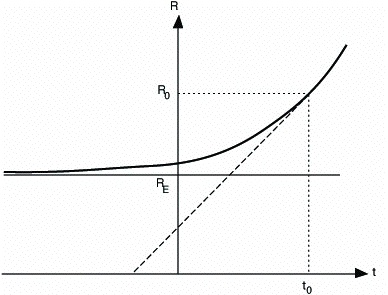
Using the available astronomical data, Lemaître provided the explicit relation of proportionality between the apparent recession velocity and the distance : « Utilisant les 42 nébuleuses extra-galactiques figurant dans les listes de Hubble et de Strömberg, et tenant compte de la vitesse propre du Soleil, on trouve une distance moyenne de 0,95 millions de parsecs et une vitesse radiale de 600 km/s, soit 625 km/s à 106 parsecs. Nous adopterons donc R’/R = v/rc = 0,68´10-27 cm-1 (Eq. 24) ».Eq. 24 is exactly what would be called later the Hubble’s law !
The fundamental significance of Lemaître’s work remained unnoticed. When Lemaître met Einstein for the first time at the 1927 Solvay Conference, the famous physicist told him : « Your calculations are correct, but your physical insight is abominable » !
In 1929, H. P. Robertson mathematically derived the metrics for all spatially homogeneous universes, but did not realize their physical meaning (his compatriot A. Walker did the same job in 1936, so that in the United States, the Friedmann-Lemaître solutions became unfairly called the Robertson-Walker models).
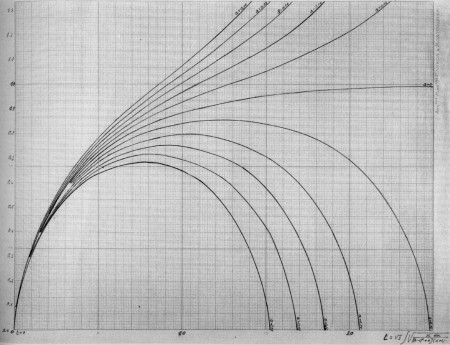
In 1929, Hubble published the experimental data showing a linear velocity-distance relation v = Hr with H = 600 km/s/Mpc. This law was strictly identical to Lemaître’s Eq.24, with the same proportionality factor … but Hubble did not make the link with expanding universe models. In fact Hubble never read the Lemaître’s paper ; he interpreted the galaxy redshifts as a pure Doppler effect (due to a proper velocity of galaxies,) instead of as an effect of space expansion. However, over the course of the 1920’s, spiral galaxies were discovered with redshifts greater than 0,1, which implied recession velocities as large as 30,000 km/s! In 1931, in a letter to de Sitter, Hubble expressed his unability to find a theoretical explanation : « We use the term ‘apparent velocities’ in order to emphasize the empirical features of the correlation. The interpretation, we feel, should be left to you and the very few others who are competent to discuss the matter with authority. » Also he was not aware that the proportionality factor between redshift and distance, wrongly named the « Hubble constant », was not a constant since it varies with time. Thus it is quite erroneous to claim, as it is often the case, that Hubble is the « father » of the big bang theory. In his popular book The realm of nebulae (1936), the great astronomer honestly recognizes that « the present author is chiefly an observer» and, on the 202 pages of the book, the theoretical interpretation of observations fills only one page (p. 198) ! Hubble makes reference to Friedmann, Robertson and Milne (who tried to build a newtonian, non relativistic cosmology), but not to Lemaître…
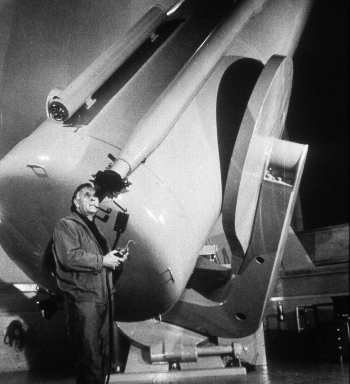
In 1930, Eddington reexamined Einstein’s static model and discovered that, like a pen balanced on its point, it is unstable : with the least perturbation, it begins either expanding or contracting. Thus he called for new searches in order to explain the recession velocities in terms of dynamical space models. Lemaître recalled him that he had already solved the problem in his 1927 article. Eddington, who had not read the paper at the right time, made apologies and promoted the Lemaître’s model of expanding space. Lemaître was asked to translate its French original into English for publication in the Monthly Notices of the Royal Astronomical Society (1931). Here takes place a curious episode : Lemaître replaced the paragraph cited above (where he gave the correct relation of proportionality between the recession velocity and the distance) by : « From a discussion of available data, we adopt R’/R = 0,68´10-27 cm-1 (Eq. 24) ». Thus, due to Lemaître (deliberate) omission, the Belgian cosmologist will never be recognized on the same foot as Edwin Hubble for being the discoverer of space expansion !
The Primeval Atom
The same year when his previous work began to be accepted by the scientific community, Lemaître dared to make an even more outrageous assumption: if the universe is expanding now, must it not have been much smaller and denser at some time in the past? In The Expanding Universe (M.N.R.A.S., march 1931), he assumed a positively curved space (with elliptic topology), time-varying matter density and pressure, and a cosmological constant such that, starting from a singularity, the Universe first expands, then passes through a phase of « stagnation » during which its radius coasts that of the Einstein’s static solution, then starts again in accelerated expansion. This « hesitating model » solved the age problem and provided enough time to form galaxies : « I am led to come around to a solution of the equation by Friedmann where the radius of space starts from zero with an infinite speed, slows and passes by the unstable equilibrium [. . . ] before expanding once again at accelerated speed. It is this period of slowing which seems to me to have played one of the most important roles in the formation of the galaxies and stars. It is obviously essentially connected to the cosmological constant ». Lemaître introduced the revolutionary concept of the « Primeval Atom » : in the distant past the universe must have been so condensed that it was a single entity, which he envisaged as a « quantum of pure energy », referring to the then new discipline of quantum physics. And he poetically described the birth of the Universe : « The atom-world was broken into fragments, each fragment into still smaller pieces […] The evolution of the world can be compared to a display of fireworks that has just ended: some few red wisps, ashes and smoke. Standing on a cooled cinder, we see the slow fading of the suns, and we try to recall the vanishing brilliance of the origin of the worlds . »
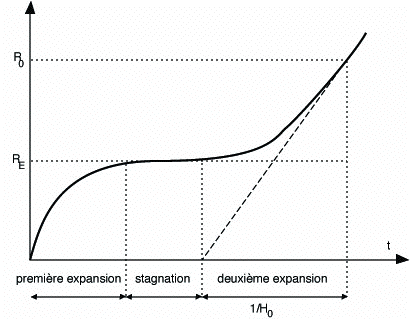
In this Lemaître’s « annus mirabilis », the short note The beginning of the world from the point of view of quantum theory, published in Nature, can be considered as the chart of the modern big bang theory. Trying to find a link between nebulae and atoms, he applied the latest knowledge about particles and radioactivity: « A comprehensive history of the universe ought to describe atoms in the same way as stars. […] In atomic processes, the notions of space and time are no more than statistical notions : they fade out when applied to individual phenomena involving but a small number of quanta. If the world has begun with a single quantum, the notions of space and time would altogether fail to have any sense at the beginning and would only begin to get some sensible meaning when the original quantum would have been divided in a sufficient number of quanta. If this suggestion is correct, the beginning of the world happened a little before the beginning of space and time. Such a beginning of the world is far enough from the present order of nature to be not at all repugnant. »
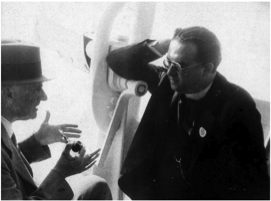
This idea was very poorly received by other scientists. The fact that Lemaître was a mathematician, allied to his religious convictions (he had been ordained as a priest in 1923), no doubt added to their natural resistance towards the instigation of a new world view. According to Eddington, « the notion of a beginning of the world is repugnant to me », while Einstein considered the primeval atom hypothesis « inspired by the Christian dogma of creation, and totally unjustified from the physical point of view ».
This was an unfair prejudice, because for Lemaître, as he expressed several times, the physical beginning of the world was quite different from the metaphysical notion of creation. And for the priest-physicist, science and religion corresponded to separate levels of understanding…
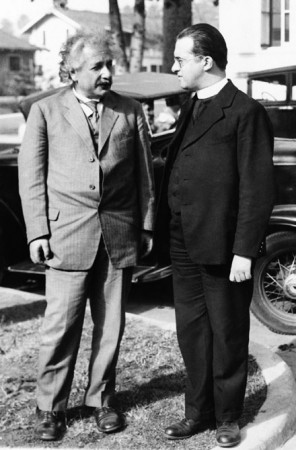
Einstein had also a bad opinion of the cosmological constant, that he considered as the « greatest blunder of his life ». It is probably the reason why, in the new relativistic model that he proposed in 1932 with de Sitter – a Euclidean model with uniform density that expanded eternally – the term disappeared. The authors did not even make reference to Friedmann and Lemaître’s works, and after that, Einstein forgave research in cosmology…
Unfortunately, due to Einstein’s authority, this over-simplified solution became the « standard model » of cosmology for the next 60 years. However Lemaître kept his original views. In Evolution of the expanding universe, published in the Proceedings of the National Academy of Science, USA (1934), he had a first intuition of a cosmic microwave background as a fossil radiation from the primeval atom : « If all the atoms of the stars were equally distributed through space there would be about one atom per cubic yard, or the total energy would be that of an equilibrium radiation at the temperature of liquid hydrogen. »
He also interpreted for the first time the cosmological constant as vacuum energy : « The theory of relativity suggests that, when we identify gravitational mass and energy, we have to introduce a constant. Everything happens as though the energy in vacuo would be different from zero. In order that motion relative to vacuum may not be detected, we must associate a pressure p = –rc2 to the density of energy rc2 of vacuum. This is essentially the meaning of the cosmological constant lwhich corresponds to a negative density of vacuumr0 according to »
Such a result will be rediscovered only in 1967 by Y. B. Zeldovich on the basis of quantum field theory, and is now considered as one of the major solutions of the so-called « dark energy problem ».
Here is a nice video about Georges Lemaître including historical material:
Much more material and analysis can be found in the following references :
J.-P. Luminet : English translation and Editorial note to « Un univers homogène de masse constante et de rayon croissant rendant compte de la vitesse radiale des nébuleuses extragalactiques » by Georges Lemaître (1927)
Gen. Rel. Grav. (2013) 45 1619–1646 [arXiv :1305.6470]
J.-P. Luminet : Editorial note to « The beginning of the world from the point of view of quantum theory » by Georges Lemaître
Gen. Rel. Grav. 43(10) (2011), p. 2911-2928 [arXiv :1105.6271]
Luminet, J.-P. 2004. L’Invention du big bang, Le Seuil, Paris (in French)
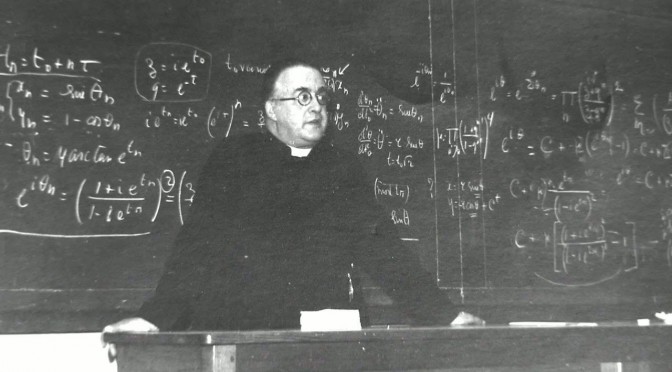
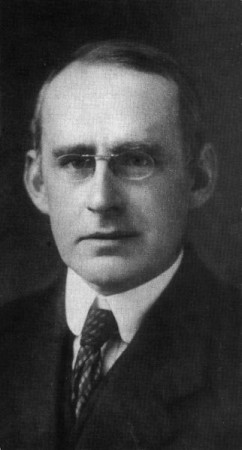
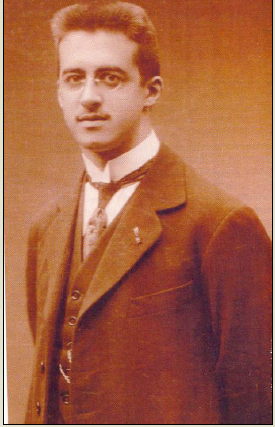
This blog was… how do you say it? Relevant!! Finally I’ve found something that helped me. Many thanks!